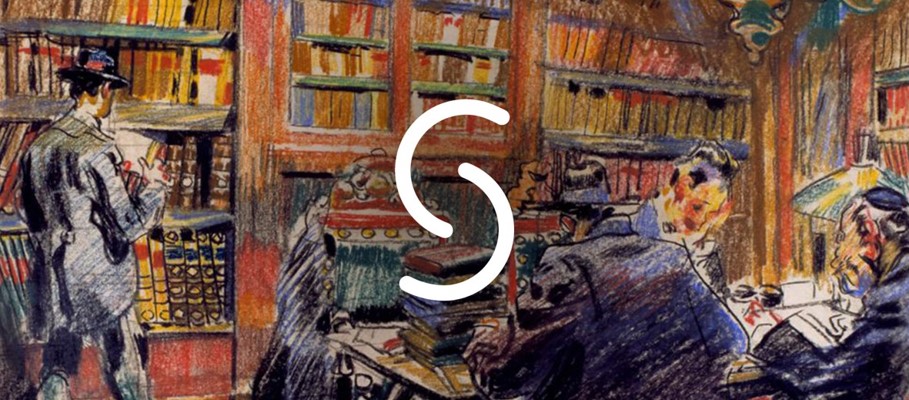Censura Librorum
Item
-
Country
-
IT
-
Name of institution (English)
-
Archive of the Congregation for the Doctrine of the Faith
-
Language of name of institution
-
ita
-
Contact information: postal address
-
Piazza del Sant’Uffizio, 11, 00193 Rome
-
Contact information: phone number
-
0039 0669895945
0039 0669895945
-
Contact information: email
-
archive@cfaith.va
-
Reference number
-
ACDF, S.O., Censura librorum
-
Type of reference number
-
Archival reference number
-
Title (English)
-
Censorship of books
-
Title (official language of the state)
-
Censura Librorum
-
Language of title
-
lat
-
Creator / accumulator
-
Congregazione del Sant’Ufficio dell’Inquisizione
-
Date(s)
-
1570/1939
-
Language(s)
-
ita
-
lat
-
Extent
-
197 storage units
-
Type of material
-
Textual Material
-
Physical condition
-
Good
-
Scope and content
-
This series preserves particularly important documents for the history of the censorship of Jewish books, Hebrew texts, and commentaries of the Torah, but, above all else, for the study of the persecution undertaken by the Holy See through qualifiers and consultants of the Talmud. These sources have not yet been studied in-depth. The studies that have been developed by Fausto Parente and Marina Caffiero in recent decades have used the Censura Librorum series in various ways, also regarding book testimonies coming from the Sephardic diaspora.
-
Archival history
-
The series entitled "Censura librorum” belongs to the Res Doctrinalia subfonds and results from the examination and evaluation of manuscripts and printed books subjected to censorship by the Holy Office. In addition to the “vota” (censorship) of the qualifiers and consultors of the Congregation of the Holy Office, there are also denunciations, reports, transmissions of acts, etc. Manuscripts or printed copies of the works examined are often attached to the documents. The series is divided into two distinct parts, according to the chronology. The old part is the largest, with documents from 1570 to 1928; the most recent part contains documents from 1917 to 1939. It has three distinct “rubricelle” (indexes) that can be consulted in the reading room.
-
(source: SIUSA Archivi Inquisitoriali Italia)
-
Administrative / Biographical history
-
The history of the Roman Inquisition and its archive begins with the appointment of a commission of cardinals by Paul III (papacy: 1534-1549) with the bull "Licet ab initio", which took place on July 21, 1542. This congregation was intended to defend the Church from heresies, maintain the integrity of the faith, and identify and condemn errors and false teachings. In 1559, on the death of Paul IV (papacy: 1555-1559), the Roman people sacked and burnt the first seat of the Inquisition, located in via di Ripetta, thus causing the loss of much of the original documentation. In 1566, Pius V (papacy: 1566-1572) set up the seat of the congregation and its archive in the current palace. Initially, the archiving of the documentation was determined by the procedural activity carried out by the congregation. In the second half of the 18th century, a reorganisation by subject began, separating the criminal issues from the doctrinal ones and creating the series that still make it up today. During the 19th century, the Archivio della Congregazione per la Dottrina della Fede was subject to various movements and suffered considerable dispersions. With the union of Rome to the French Empire in 1809, it was transported to Paris by order of Napoleon. For the return of the archives to Rome in 1816, the Apostolic Delegate received the mandate to destroy the parts of the documentation not strictly essential to administrative activity. The criminal series was almost entirely burnt and only a few important trials were saved. During the Roman Republic of 1849, the complex of documents underwent further transfers and losses and, only in 1868, the part of the documentation necessary for the current administration was relocated to the palace of the Holy Office, while the oldest closed series remained kept in the Apostolic Palace until 1901. Then, this archival material was recovered and rearranged, forming the so-called Stanza Storica. This has remained the main structure of this archive until today. The Archivio della Congregazione per la Dottrina della Fede was open for consultation by scholars in 1998.
-
(source: Archivio della Congregazione della Dottrina della Fede)
-
Finding aids
-
Three index books: 1. 1570-1850; 2. 1852-1916; 3. 1917-1939
-
"Inventario generale Shades 6 Ecclesia" (Software for Historical Archives Description – Ecclesia) only available in the reading room
-
Author of the description
-
Andrea Cicerchia, 2022
-
Bibliography
-
Caffiero, Marina. 2001. “I Libri Degli Ebrei. Censura e Norme Della Revisione in Una Fonte Inedita.” In Censura Ecclesiastica e Cultura Politica in Italia Tra Cinquecento e Seicento: VI Giornata Luigi Firpo: Atti Del Convegno, 5 Marzo 1999, edited by Cristina Stango, 1000–1022. Studi e Testi / Fondazione Luigi Firpo, Centro Di Studi Sul Pensiero Politico 16. Firenze: L.S. Olschki.
-
Caffiero, Marina. 2012. Legami Pericolosi: Ebrei e Cristiani Tra Eresia, Libri Proibiti e Stregoneria. Einaudi Storia 42. Torino: G. Einaudi.
-
Caffiero, Marina, and Giuseppina Minchella, eds. 2021. L’Inquisizione e gli ebrei: nuove ricerche. Prima edizione. Temi e testi ; “Religioni frontiere contaminazioni” 202. Roma: Edizioni di storia e letteratura.
-
Parente, Fausto. 2001. “The Index, the Holy Office, the Condemnation of Talmud and Publication of Clement VIII’s Index.” In Church, Censorship, and Culture in Early Modern Italy, edited by Gigliola Fragnito, 163–93. Cambridge Studies in Italian History and Culture. Cambridge, U.K. ; New York: Cambridge University Press.
-
Wendehorst, Stephan, ed. 2004. The Roman Inquisition, the Index and the Jews. Context, Sources and Perspectives. 1°. Studies in European Judaism 9. Leiden-Boston: Brill.
